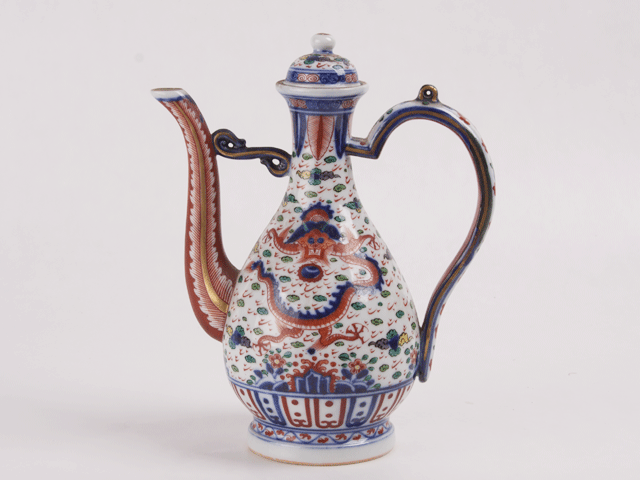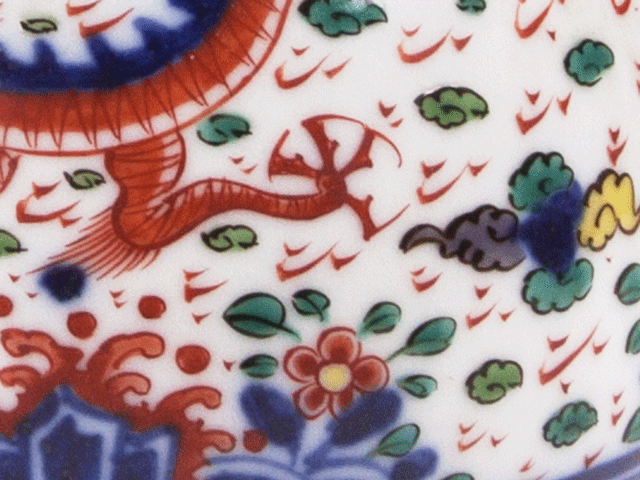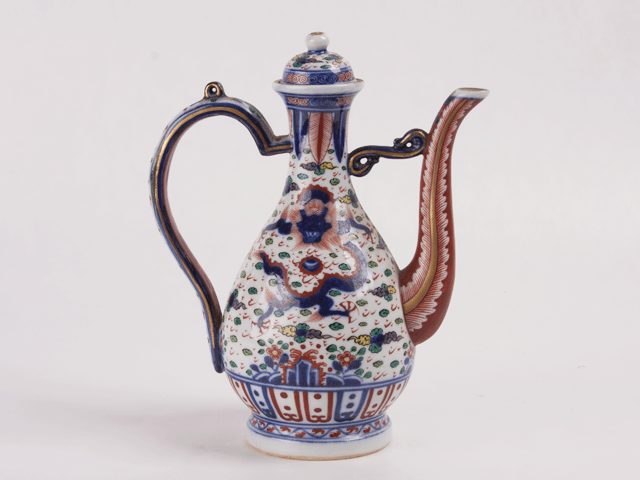
2009.35.4, ewer; Ming dynasty, Wan Li period (A.D. 1573–1620)
Gift of the estate of Elizabeth Cooper; photo by T. Ocken

2009.35.4, ewer; Ming dynasty, Wan Li period (A.D. 1573–1620)
Gift of the estate of Elizabeth Cooper; photo by T. Ocken
Today, people who obsessively trade up to the latest iPhone help drive
China's economy. In previous centuries, an obsession with porcelain played
a similar role in world trade. If you don't understand that earlier
obsession, looking more closely at this wine ewer may help.

Detail of the previous photo
First, there's the porcelain itself: surprisingly light (compared to stoneware) and white as snow. There's the elegant shape, perfected over centuries. There's the dynamic composition, full of color, that rewards closer study. (When you looked at the first picture, did you notice the flower below the dragon's foot?) The gilding on the spout and handle add to the piece without overwhelming it. This wine ewer is a masterpiece that can help satisfy the urge to own beautiful things.
There are other reasons Westerners acquired porcelain, starting hundreds of years ago. Owning the ewer implied that you were sophisticated enough to appreciate treasures from another civilization. And, more crudely but perhaps just as important, a ewer such as this one was hideously expensive by the time it reached Europe or the Americas. Along with large homes, carriages, and fashionable clothing, owning and using porcelain was a necessary part of being rich.
The ewer is 7 inches (18 cm) tall. On the other side of the ewer the
dragon is blue, as you can see in the image below. To see the ewer
with the stopper removed, please click
here.

Photo by T. Ocken
See source code for copyright information. Page last revised on March 4, 2016. Please report problems to toh@unm.edu